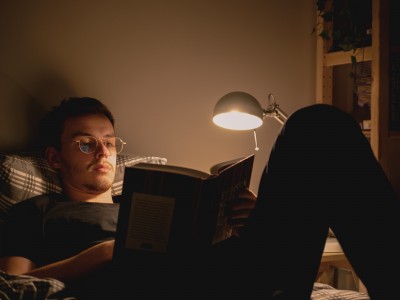
Does reading in low light affect vision?
18 September 2025
Since childhood, we’ve often heard warnings like “don’t read in the dark, you’ll damage your eyes.” But how true is this? Can the habit of reading in low light actually cause permanent damage to your vision?
Myth vs. Reality
Science has shown that reading in low light does not cause permanent eye conditions such as myopia, astigmatism, or cataracts. Our eyes are capable of adapting to different lighting conditions thanks to the pupil, which dilates or contracts depending on the amount of available light.
However, the effort our eyes make in poorly lit environments can lead to temporary discomfort, such as:
-
Eye strain
-
Headaches
-
Difficulty concentrating
-
A feeling of dryness or heaviness in the eyes
These symptoms disappear once the eyes rest, but they can affect productivity and day-to-day comfort.
Why does this happen?
When lighting is insufficient, the eyes need to work harder to focus and distinguish details. This means extra effort from the ciliary muscles, which control focusing, and from the retina, which receives less light stimulation.
Although this effort does not cause structural damage, it can create discomfort, especially in people who already have refractive errors such as myopia, hyperopia, or astigmatism.
Tips for reading comfortably
-
Always use an adequate, even light source—preferably white or natural light
-
Avoid direct glare on the page or screen
-
Adjust the brightness and contrast of electronic devices
-
Practice the 20-20-20 rule: every 20 minutes of reading or screen work, look at an object about 20 feet away (approx. 6 meters) for at least 20 seconds.











